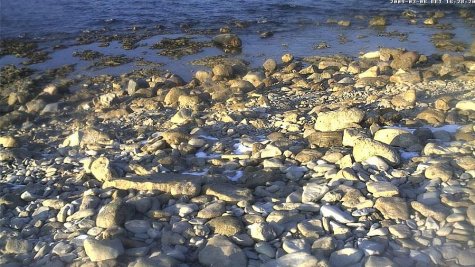Seal Camera: What Stones Do We See?
Seal camera watchers first notice the greyish stone rubble more easily than the pups of the ‘fur-coated fish’. What stones are there? It is clearly limestone but from what stratum? The scientists distinguish very precisely, layer by layer, eras and strata in the bowels of the earth, it helps to determine the properties of rocks. For instance – do we have a good building limestone or not. But in the islets of Western Saaremaa nobody can say with certainty which stratum is there.
Estonian geologists simply have not made any scientific expeditions to the islet where the seal monitoring camera is mounted since the end of the Soviet period – neither from Tallinn nor from Tartu.
According to our doyen of limestone knowledge, Rein Einasto, in Soviet times the Soeginina bank on Western Saaremaa was thought to belong to the Rootsiküla stratum, which should reach out to the islet where the seals breed. In the fascinating Rootsiküla stratum are hidden one of the most exciting fossils (the primitive crustaceans eurypterids) who lived in the Upper Silurian era, when the Soegnina area was the bottom of a freshwater lagoon: a place with lapping waves in shallow protected waters.
But today it is known that Soeginina’s upper part actually belongs to the Paadla stratum, as limestone doyen Rein Einasto and other scientists have established.
Whether the stones visible in the seal camera belong to the Paadla or the Rootsiküla stratum nobody can say for sure today. An interesting fact is that Estonia is a geologically thoroughly investigated territoty - except certain western areas, but this will surely be remedied. As for the seals’ beddings it is possible that there lies the border area between these two strata, our doyen of limestones believes. All in all, highly intriguing! This should be clarified in a near future. When there is new information we will tell you.
Rein Einasto - geologist, professor at TTK, Tallinn University of Applied Sciences, limestone origins and genesis expert.
Translated by Liis from Forum









